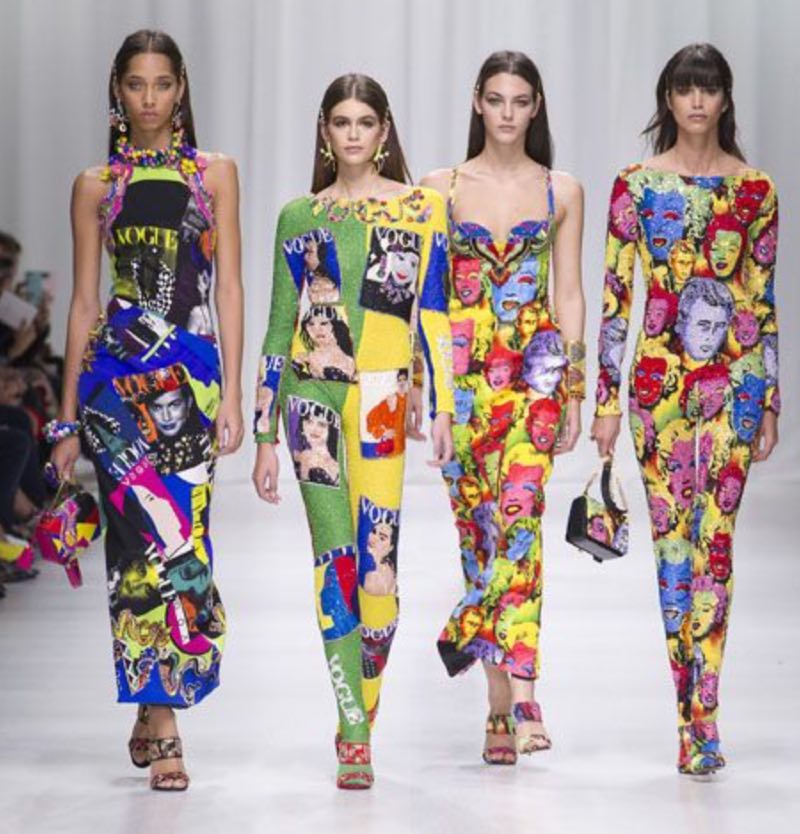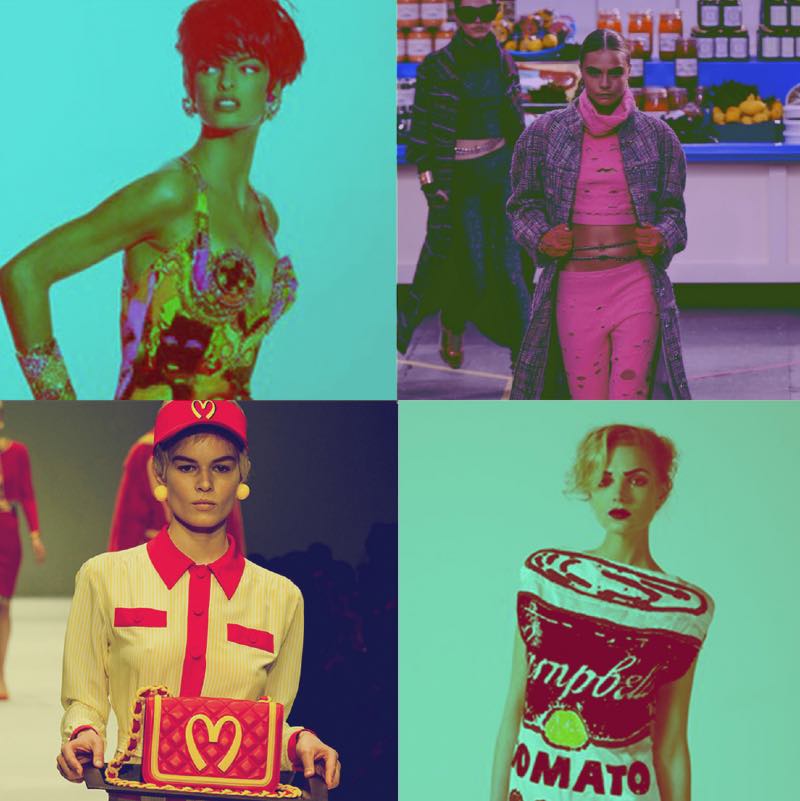
Pop Art 1950
the pop art
Pop Art artists choose to look and depict the world as it appears to them as inhabitants of a large contemporary city. They don’t feel that furious desire for nature – for natural energy – that animated their predecessors of action painting.
The world of pop artists is a world, we could say, entirely artificial, a deeply worked world, formed by technique. A world made up of all the figures produced by the mass media, especially visual ones, such as photography, cinema, television, the popular press, the spectacle of great rock concerts.
And the commercial packaging intended for mass distribution, and advertising, of course, that advertising which has enriched the visual dimension for those who live in a big city with absolutely new and more than evident figures.
And, finally, what pop artists live in and represent is a world crowded with machines: all the household appliances, subway trains, cars, planes.

Versace Spring/Summer 1991 collection inspired by Andy Warhol
Fashion in Pop Art
Fashion, obviously, contributes powerfully to producing that figure of the contemporary that fascinates and engages pop artists. Warhol once said in Italy that the only current Italian artists were the great stylists. But, in reality, what more or less directly exerts an influence on pop artists, because it is an integral part of their world, is perhaps street fashion.
A collective and non-conformist fashion:
It is collectively created fashion. The fashion caused by small original inventions of which often no one knows the author. And then continuously formed and reformed in an infinite series of imitations, adjustments, emphases, changes, contradictions. These propagate lightning-fast in that network of relationships, both natural and complicated, which unite the smallest and most sensitive minorities (including transvestites) to the larger majority which is more ready to conformistically accept any non-conformist proposal.
Without prejudice to that original element of popularity – or even of programmatic, virtual poverty – which immediately characterized the three fundamental items of clothing that we could call essentially street and essentially pop fashion: jeans, the T-shirt, the jacket (of fabric or leather).
Street fashion, of course, is an integral part of the world on which Pop Art was nourished and worked. And it is certainly worth remembering that – between fashion and Pop Art – the figure of that world, essentially American , has ended up conquering, one generation after another, the majority of young people around the globe. Perhaps never in history has a culture proved so fascinating, so naturally irresistible for the great masses.
An instrument of conquest, even. And, first of all, in the surface of the costume. (In all senses of the word costume. Both in the sense of dress and in the sense of ‘system of behavior – even symbolic – of the masses’).

Read also:
Farewell to the genius of Pop Art: Andy Warhol

